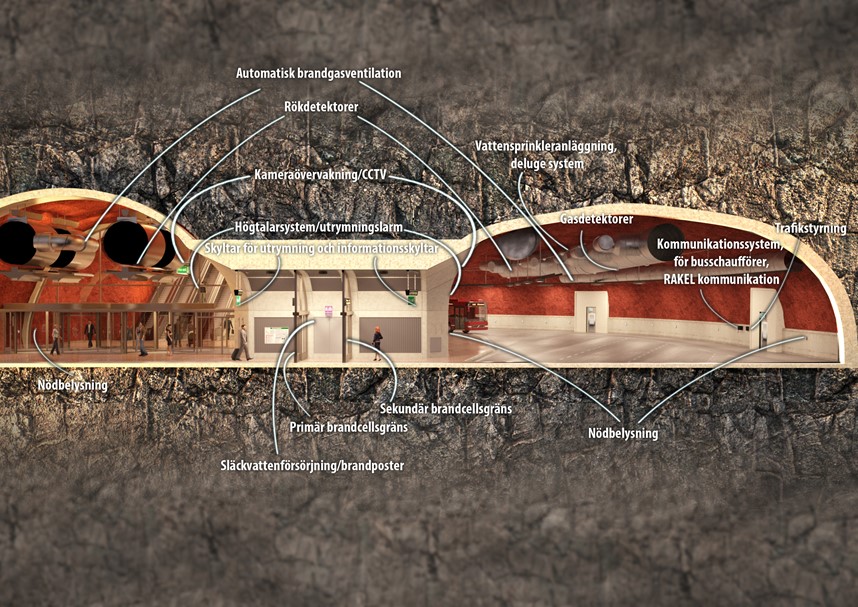Safety Related Challenges when Designing Sustainable Cities
A Practical Example with an Underground CNG Bus Terminal
Abstract
The transition towards sustainable city planning is challenging from many perspectives, e.g. the speed of development towards fossil free fuels and updating of regulations for controlling risk in the transport infrastructure do not manage to keep an even pace. This applies both at the detailed level regarding technical design requirements and on a more comprehensive performance level of safety objectives that can be verified to confirm compliance with society's safety objectives. This paper presents challenges, experiences and results in connection with the analysis of the risks associated with an underground bus terminal operated with gas-powered buses. A risk analysis approach used in an ongoing project in the final stage of the planning process, which makes it possible to discuss experiences and difficulties based on work in practice. Two main types of injury are studied; fire and explosion, where people can be exposed to both high temperatures, toxic smoke, radiation, pressure waves and impact by flying debris. Fire, may occur with ignition of combustible gas mixture (in air). It can be noted that an underground bus terminal operated by gas-powered buses constitutes a complex facility from a risk perspective and that the risk level without special consideration for additional safety measures is expected to be high. Therefore, a safety concept is required that is balanced between different types of measures, such as supervision, control and safety enhancing installations as well as inherent passive protection.
References
Dutch Safety Board. Fire in a CNG bus, Wassenaar 29 October 2012.
Gehandler, J., Karlsson, P., & Vylund, L. (2016). Risker med nya energibärare i vägtunnlar och underjordiska garage, SP Sveriges tekniska forskningsinstitut, 2016.
Gexcon. (2019). Flacs, CFD-software, Product description. Retrieved from http://www.gexcon.com/products-services/ FLACS-Software/22/en
Hellsten, J., & Nygren, G. (2016). Appendix A – Riskanalys avseende bussar med fordonsgas i bussterminal: C4-PM-800-0902_bilaga 1, 2016-09-20, WSP, Sweden, 2016.
IEC. (1995). International Standard 60300-3-9. Dependability management - Part 3: Application guide - Section 9: Risk analysis of technological systems. Geneva: International Electrotechnical Commission, 1995.
ISO. (2002). Risk management - Vocabulary. Guidelines for use in standards, Guide 73. Geneva: International Organization for Standardization, 2002.
Lundin, J. (2019). Quantification of a Safety Target for an Underground CNG Bus Terminal in Stockholm. Fire Safety Journal, 104, 57-66. https://doi.org/10.1016/j.firesaf.2019.01.005
Nygren, G., & Östlund, A. (2016). Tekniskt underlag för detaljplan – Säkerhetskoncept, Rapport – Brand/Risk, WSP, Sweden, 2016.
Petzäll, J. (2010). Bus fire safety and statistics”, Swedish Transport Agency, Sweden, 2010.
Swedish Accident Investigation Authority. (2013). Brand med två biogasbussar i stadstrafik i Helsingborg, Skåne Län, den 14 februari 2012. 2013.


This work is licensed under a Creative Commons Attribution 4.0 International License.
Copyright for this article is retained by the author(s), with first publication rights granted to the journal.
This is an open-access article distributed under the terms and conditions of the Creative Commons Attribution license (http://creativecommons.org/licenses/by/4.0/).








1.png)














